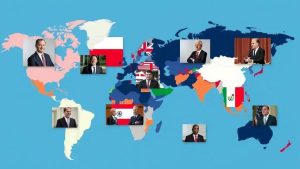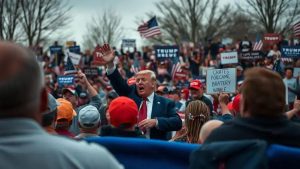Media freedom issues: Understanding the challenges ahead
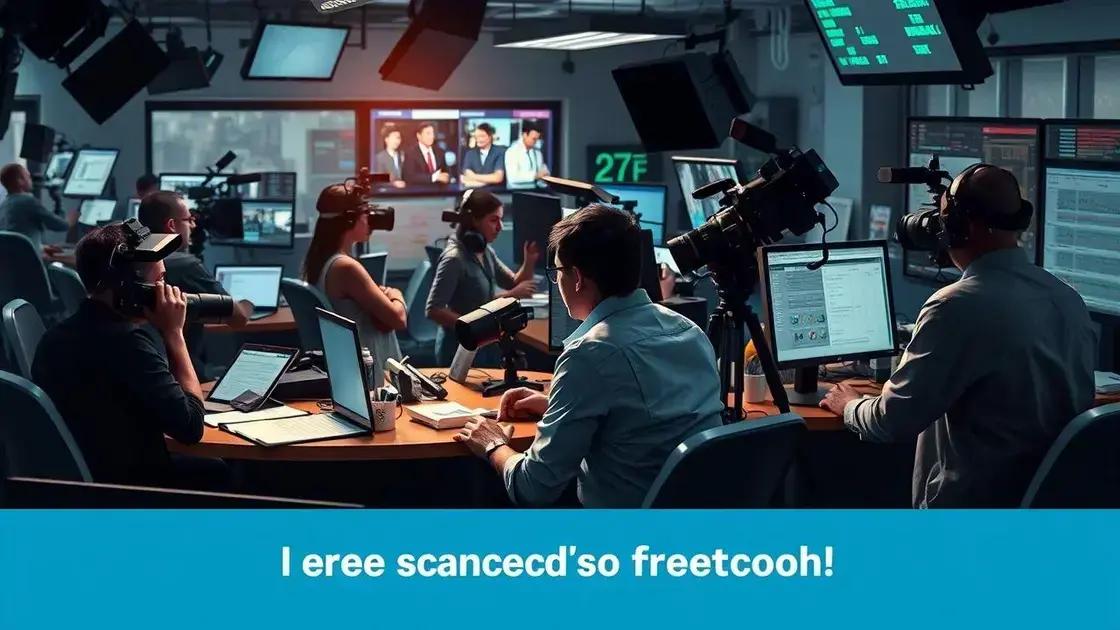
Media freedom issues encompass threats like government censorship, misinformation, and political pressure, all of which significantly impact journalists and the ability of the public to access unbiased information.
Media freedom issues are at the forefront of our global conversation about democracy and society. With new challenges emerging daily, understanding what affects the media landscape is crucial. Let’s dive into what’s happening.
The current state of media freedom
The current state of media freedom is a reflection of the broader democratic principles in a society. In many countries, journalists operate under intense scrutiny and pressure, which can severely impact their ability to report freely.
Global Overview
Across the globe, the landscape of media freedom varies significantly. Some nations embrace it, while others impose stringent restrictions. Understanding these differences is crucial.
- Countries with free media allow for diverse opinions.
- Authoritarian regimes often censor news outlets.
- Media freedom is linked to democracy and human rights.
Additionally, technological advances have changed how news is consumed. With the rise of social media, information spreads quickly, but this also poses challenges. Misinformation can proliferate, impacting public perception and trust in media.
Challenges Facing Journalists
Journalists today face numerous challenges, including threats of violence, legal repercussions, and censorship. Such realities affect their ability to pursue unbiased reporting and share stories that matter.
- Threats to physical safety are a major concern.
- Legal action can deter journalists from investigating sensitive topics.
- Censorship stifles diverse narratives and voices.
Moreover, economic pressures can influence editorial decisions. Media outlets often rely on funding sources that may have their own agendas, leading to conflicts of interest.
Understanding the current state of media freedom is essential for advocates of democracy. As citizens, being informed about the media landscape empowers us to demand better protections for journalists and the freedom of the press.
Major threats to journalistic integrity
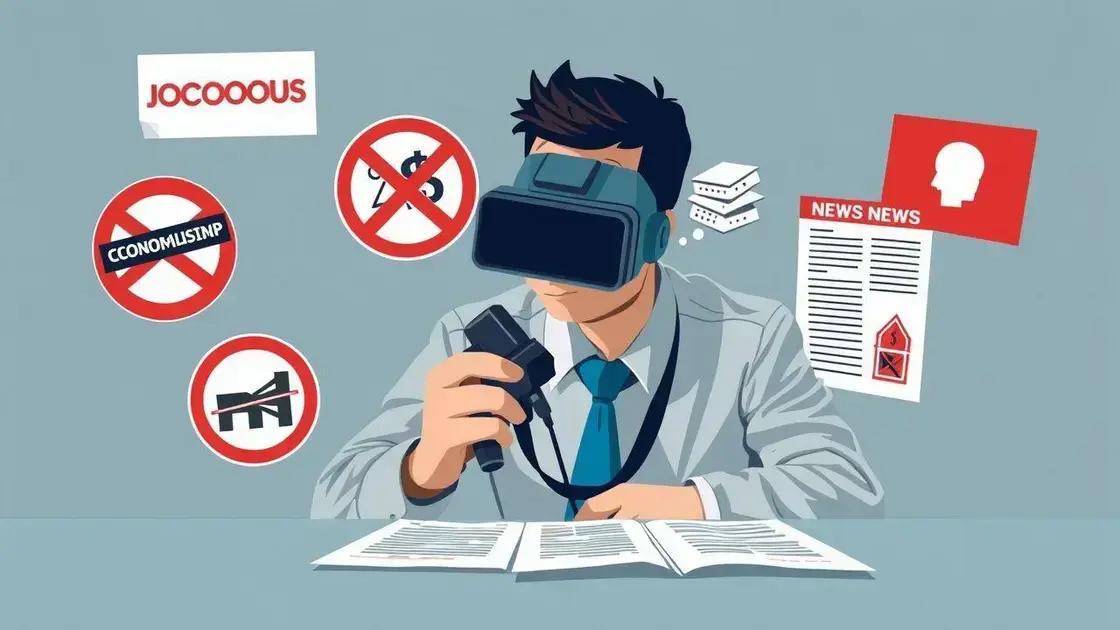
The major threats to journalistic integrity are increasingly complex and varied. Journalists strive to report the truth, but multiple factors impede their ability to do so effectively.
Political Pressure
In numerous countries, political figures exert pressure on the media. This pressure can come in the form of direct censorship, intimidation, or threats. Some governments view the media as a tool for propaganda, limiting reporters’ freedom to cover critical issues.
- Government restrictions on reporting.
- Intimidation tactics against journalists.
- Laws that limit freedom of speech.
Such tactics can lead to self-censorship among journalists who fear repercussions. When reporters do not feel safe, the public’s access to unbiased information diminishes.
Economic Influences
Media organizations face economic challenges, which can compromise integrity. Advertisers wield significant power over media narratives, prompting outlets to prioritize financial gain over truthful reporting. This reality can lead to biased news coverage.
- Dependence on advertising revenue.
- Potential conflicts of interest.
- Reduction in investigative journalism resources.
Additionally, smaller outlets may struggle to survive in a competitive market, leading to layoffs and a reduction in diverse voices in journalism.
Another threat is the dissemination of misinformation, especially on social media. With the rise of viral news, the line between reliable reporting and sensationalized content often blurs. This confusion can erode public trust in media altogether, making it even more critical for credible journalists to stand firm in their commitment to the truth.
Impact of social media on news dissemination
The impact of social media on news dissemination is significant and profound. Social media platforms have transformed how news is shared and consumed, allowing information to spread rapidly.
Fast Information Flow
Unlike traditional news outlets, social media enables instantaneous updates. This immediacy can be beneficial during breaking news situations. People often receive news alerts via social media before they see reports on television or read articles.
- Instant updates during crises.
- Ability to share live footage and events.
- Engagement through comments and shares.
However, the speed of information flow can also lead to misinformation. False stories can gain traction quickly, causing confusion and panic among the public. Individuals must be discerning about what they believe and share.
Changing News Consumption
Social media has changed how people consume news. Many individuals now rely on platforms like Twitter, Facebook, and Instagram as primary news sources. This shift impacts traditional media outlets, which are struggling to retain their audience.
- Decline in print media subscriptions.
- Increased competition for attention.
- Changing advertising revenue models.
People often seek news that aligns with their beliefs, leading to echo chambers. This phenomenon can limit exposure to diverse viewpoints and contribute to polarization.
Despite these challenges, social media has also democratized information. Anyone with an internet connection can share news and opinions, providing new voices a platform. It empowers citizens to report on events that may be overlooked by mainstream media.
Legal frameworks affecting press freedom

The legal frameworks affecting press freedom vary greatly across countries and have a profound impact on how journalists operate. These laws can either protect the media or impose restrictions that hinder their ability to report freely.
National Laws
Each country sets its own laws governing the press. Some nations have robust protections for freedom of speech and the press, while others impose strict regulations. Laws can range from those that protect journalists from persecution to those that allow for prosecution based on vague definitions of national security.
- Constitutional protections: Many democracies enshrine press freedoms in their constitutions.
- Censorship laws: Some countries enforce laws that censor content deemed inappropriate.
- Libel and defamation laws: These laws can be used to silence journalists through legal threats.
Legal battles often arise when journalists challenge these laws, especially in authoritarian regimes where the government exercises control over the media.
International Treaties
International treaties play a role in shaping national legal frameworks. Documents like the Universal Declaration of Human Rights set out fundamental freedoms, including freedom of expression. However, the implementation of these treaties can vary.
- International scrutiny: Countries that violate press freedom can face backlash from the international community.
- Support for journalists: International organizations often provide legal assistance to journalists facing persecution.
- Advocacy through NGOs: Non-governmental organizations actively work to promote press freedom globally.
Furthermore, during times of crisis, governments might implement emergency laws that restrict press freedom in the name of security. These measures can lead to significant curtailments of journalists’ rights and freedoms, making it crucial to uphold strong legal protections in peaceful times.
Case studies of media censorship
Examining case studies of media censorship reveals the challenges journalists face in various parts of the world. These real-life examples highlight how censorship impacts freedom of speech and the dissemination of information.
China’s Control of the Internet
In China, the government exercises strict control over media and the internet. This censorship is enforced through the Great Firewall, which blocks access to foreign websites and controls online information. Journalists who try to report on sensitive topics, such as the Tiananmen Square protests, face severe penalties.
- News about government corruption is often suppressed.
- Social media is monitored, with posts being deleted if they threaten the state narrative.
- Journalists can be arrested for “spreading rumors” or disturbing public order.
These measures effectively stifle independent journalism, leaving citizens with limited access to unbiased news.
Turkey’s Crackdown on Journalists
Turkey has witnessed a significant rise in media censorship in recent years. Following a failed coup attempt in 2016, the government launched a campaign against journalists. Many have been jailed or forced into exile, making it increasingly difficult to report on critical issues.
- Over 100 journalists were imprisoned in 2020 alone.
- Media outlets that criticize the government face shuttering or fines.
- Self-censorship among journalists has become common due to fear of reprisals.
The environment for media in Turkey has dramatically changed, limiting the public’s ability to receive unbiased news.
Another significant case is that of Russia, where the government exerts control over major media outlets. State-run media shapes public perception, while independent journalists face harassment and intimidation. These cases illustrate the broader trend of media censorship across the globe.
Future trends in media freedom
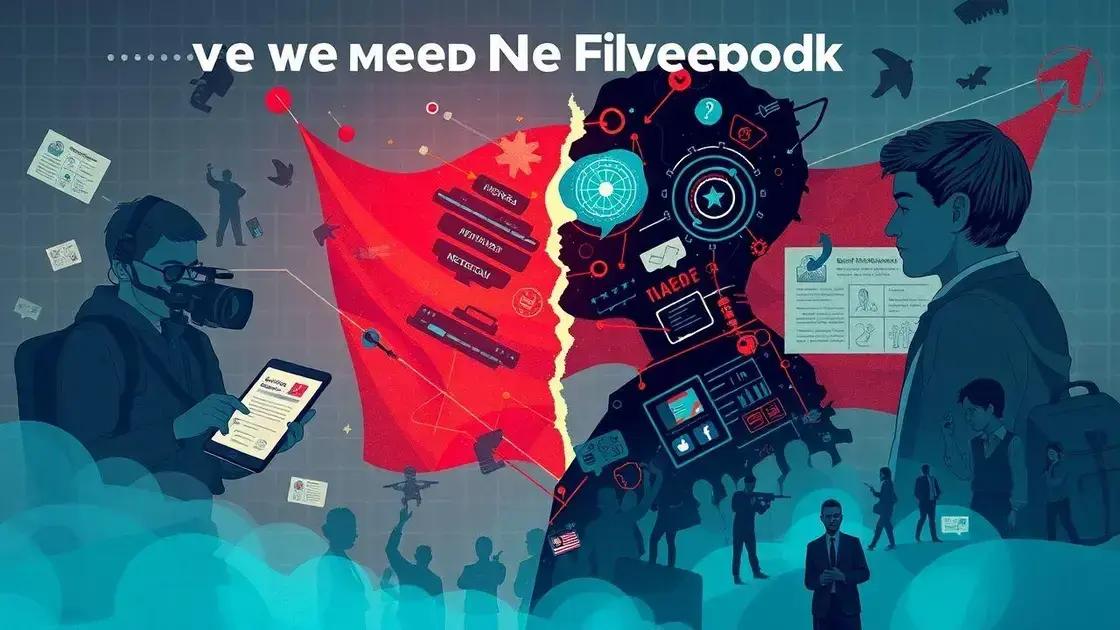
As we look at the future trends in media freedom, several key factors are shaping the landscape for journalism worldwide. Advances in technology, changing political climates, and the evolving role of social media all play critical roles.
Emerging Technologies
New technologies are both helping and hindering media freedom. For example, the rise of artificial intelligence can help journalists analyze data more efficiently. However, it can also lead to increased surveillance and control by governments.
- AI in journalism: Tools that help in gathering and analyzing news.
- Blockchain technology: Could ensure transparency in news reporting.
- Encrypted communication: Helps protect journalists from surveillance.
While these technologies might enhance journalistic practices, they also pose risks if abused by authorities looking to suppress dissent.
Political Influences
The political landscape is shifting globally, with some countries tightening censorship laws while others promote media freedom. In nations where democracy is strong, there may be a push for greater press protections. However, authoritarian regimes may continue to restrict media activities to maintain control.
- Rising authoritarianism: More countries may follow authoritarian trends.
- Democratic movements: Grassroots movements pushing for more freedom.
- International pressure: Global organizations advocating for press rights.
The outcome may lead to a polarized environment where media freedom thrives in some regions while suffering in others.
Additionally, the public’s demand for accountability from media outlets is increasing. As citizens become more aware of misinformation, they will likely push harder for transparency and truthfulness in reporting. This trend could propel journalists to adhere to higher standards, fostering public trust.
The landscape of media freedom is evolving rapidly, influenced by various factors. As technology progresses, it presents both opportunities and challenges for journalists. Political situations across the world can either bolster press freedom or impose severe restrictions. The rise of public awareness regarding misinformation drives demand for accountability from media outlets. By understanding these trends, we can better advocate for a future where media freedoms are protected and promoted.
Key Trend | Details
— | —
🚀 Technology Advancements | AI tools help automate journalistic tasks.
🏛️ Political Changes | Countries are either restricting or promoting press freedoms.
🔍 Awareness of Misinformation | Greater demand for accountability in news reporting.
✊ Advocacy for Press Freedom | Communities are pushing to protect media rights.
🔮 Future Trends | The excitement for transparent and fair media grows.
FAQ – Frequently Asked Questions about Media Freedom
What are the major threats to media freedom today?
Major threats include government censorship, political pressure, and the spread of misinformation that can distort public perception.
How does technology impact media freedom?
Technology can enhance journalistic practices through AI and data analysis, but it can also lead to increased surveillance and control by authorities.
What role does public awareness play in media freedom?
As public awareness of misinformation grows, there is greater demand for accountability and transparency from media outlets.
What can individuals do to support press freedom?
Individuals can advocate for journalists’ rights, share credible information, and participate in movements promoting media freedom.



